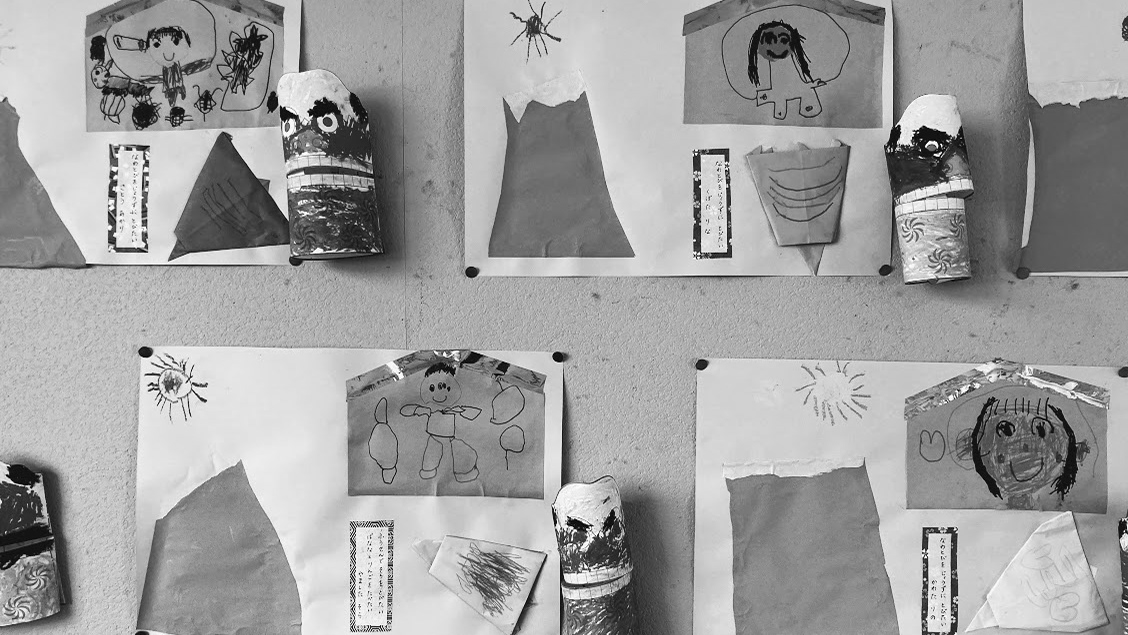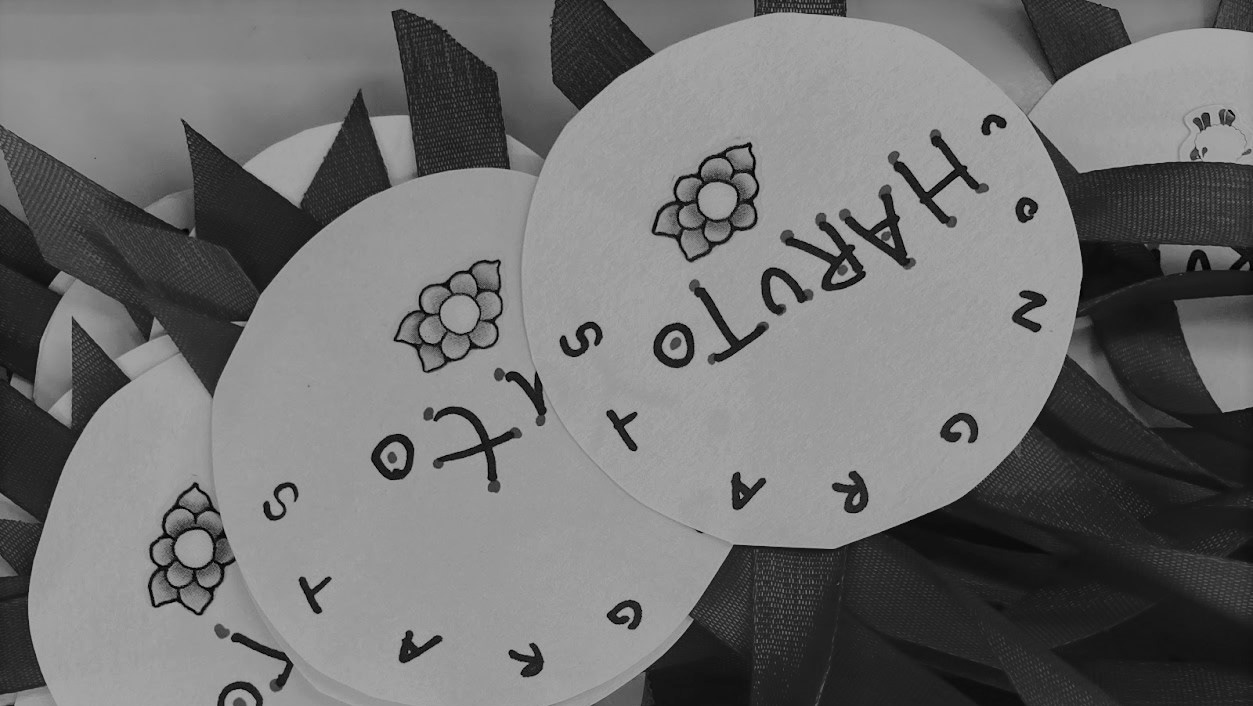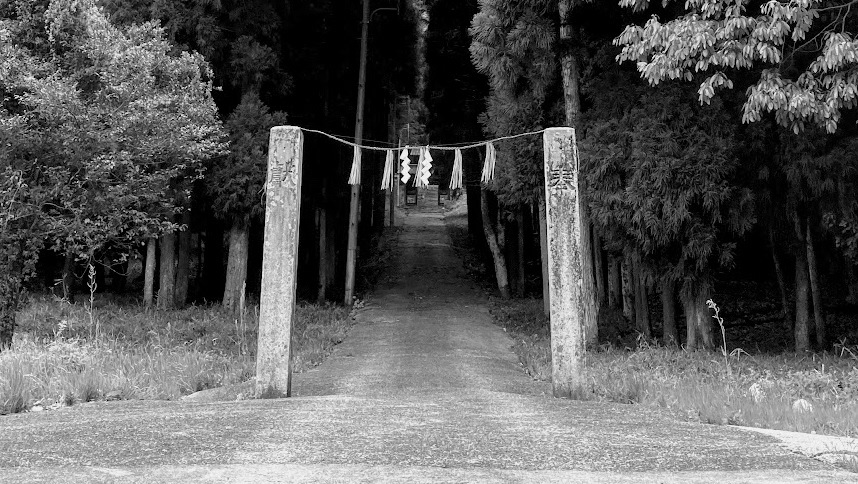1.22.23
Happy New Year - Akemashite Omedetou Gozaimasu!
The weeks have escaped me, and in a matter of seconds it is almost the end of January. This marks one year since embarking to Japan...I sit here stunned thinking how simultaneously short and long ago it feels from those quarantine days. My first blog post listed a few goals including:
- "...really embrace and be more confident with claiming my Japanese identity"
- "...to win over all the Yakage grannies"
I think both of these have been met, but that's all credit to this community being so ready to take me in with open arms. This especially comes true with food. I feel so much more fluent in this language and this is owed to all the granny (and grampy) friends I've made over this past year. From getting to weed the Sakamoto Baba-chan's veggie garden to digging up sweet potatoes with Ma-Chan's friends to receiving Mimura-san's constructive criticism on my attempts at chikuzeni, I have a new and strong form of confidence in my Japaneseness. I still don't speak as well as I'd like (working on it!) and I still am seen as the "gaikokujin" here. But! When a granny takes a small spoon of your zenzai, looks up and says "tsukutta no? maji umai!" (you made that? It's actually really good!) and returns an empty container in a minute, it's hard walking away without feeling like you've done something right.
So, aside from that dose of reflection, I come today with the fascinating culture of ozoni, Japan's traditional New Years Soup!
In simple description, ozoni is a soup with a simple broth, some form of vegetables, some form of protein, and the most important ingredient: a form of mochi (Japanese pounded rice cake.) Families wake up to an ozoni breakfast on January 1st, making it the first meal of the new year. It has its roots from about 1000 years ago, the Heian Period of Japan, when mochi was first considered to be a food representative of luck and fortune. Thus, it seems this symbol has carried for centuries to be a wish for a fortunate upcoming year.
What is especially interesting about the ozoni is its varied form from the very head to tail of Japan in terms of the type of soup, mochi shape, mochi form, and main soup ingredients.
- Soups are typically either a white miso broth or soysauce dashi clear broth, though there are some prefectures that are completely "out there" with red bean soup (Izumo region.)
- Kansai Japan typically uses round mochis, called enman. The kanji for enman of course means circular, but also means peace and harmony, thus bringing such wishes for the new year via the soup. Kanto Japan uses square mochis called kado mochi. This comes from the distribution of goods in the Edo period.
- Mochis are either toasted or boiled/cooked in water. It's said the east Japan tends to toast while west Japan tends to boil, though there were several families in Yakage (considered west Japan) who toasted their mochis.
- Ingredients typically vary based on the region's "meibutsu," food/thing they're known for (i.e. Philly's meibutsu would be the cheesesteak, NYC would be the pizza slice, etc.) Since Okayama is close to the sea, many families put buri, an expensive kind of fish, in their ozonis. Hiroshima is known for their delicious oysters, so the Hiroshima ozoni is known to have oysters in their soup. However, it's common all around Japan to see carrots, daikon, and some kind of green in the soup.
Not only do the ozoni recipes vary among the regions, but almost every family will have their unique way of making the soup. When asking my friends in Yakage about New Years, they'd always start saying, "we celebrated with MY family's ozoni" and would proceed to explain what broth, mochi type, and ingredients made it specifically THEIR ozoni soup. Here are some people's soups:
- the Mimura's put toasted round mochi, fishcake, red carrot, white cabbage, daikon, and yuzu in a bonito/kombu soysauce dashi broth
- Machan put boiled round mochi, buri fish, daikon, carrots, spinach, and long green onion in a soysauce dashi broth
- Yamoto san put boiled roudn mochi, buri fish, hamaguri clam, dashi, and carrot in a soysauce dashi broth
- Ikeda sensei put chicken, carrot, spinach, daikon, and her aunt's special nori in a soysauce dashi broth
- Kawakami san put toasted mochi, buri, daikon, carrot, and something else in a white miso broth
There were a lot more told to me, but alas, I don't remember them all! Yet, it was such fun asking so many people and getting so many different answers, especially since almost every answer came with an excitedness and pride around the dish and the family.
I ended up making my own as well, and it was actually so meaningful deciding how to put mine together--it ended up being a combo of my Japaneseness in America and my Japaneseness in Yakage.
Japaneseness in America: When growing up, our New Years dinner had ozoni, but I didn't think much of the mochi soup. Mother Harumi would make a clear chicken, soysauce and dashi broth, put daikon, carrot, shiitake, kamaboko and mitsuba, then arrange everything around a toasted rectangular mochi. I didn't realize this was specific to my mom--it was only until this year after talking to all my Yakage families that I realized her ozoni was very characteristic of her family in Tokyo. Without me knowing, my mom was celebrating and passing down her roots despite having to bring up her branches an ocean away.
Japanesenesness in Yakage: I'm comfortable saying Ma-Chan is my Yakage mom...she truly takes care of me like one of her own. So of course, she had me over for her ozoni even though I could only go a week after January 1st. She had me watch and learn while cooking the soup, and I was reminded yet again of how much more I've been able to embrace and discover my Japanese background within this Yakage year, especially thanks to Ma-Chan who knows almost everything about cooking and is so willing to share it with anyone and everyone.
So, I bring to you my ozoni: a soysauce, chicken and shiitake dashi broth, with mitsuba and toasted mochi (these elements speak to my mom) and the daaikon, carrot and long green onion (these speak to Ma-Chan.) This soup is a perfect way to symbolize the merging of what I now consider two branches of my Japanese identity, one that's been born and fostered in the states and one that's been and is still being added to in Yakage. Dang flab, I'm psyched to see what else I can reap, embrace, learn in the coming last months of my Yakage life!!!
Thanks 2022, and here's to 2023! Kotoshimo yoroshiku onegaishimasu!

mimiura new years meal!

one of my fav yakage families
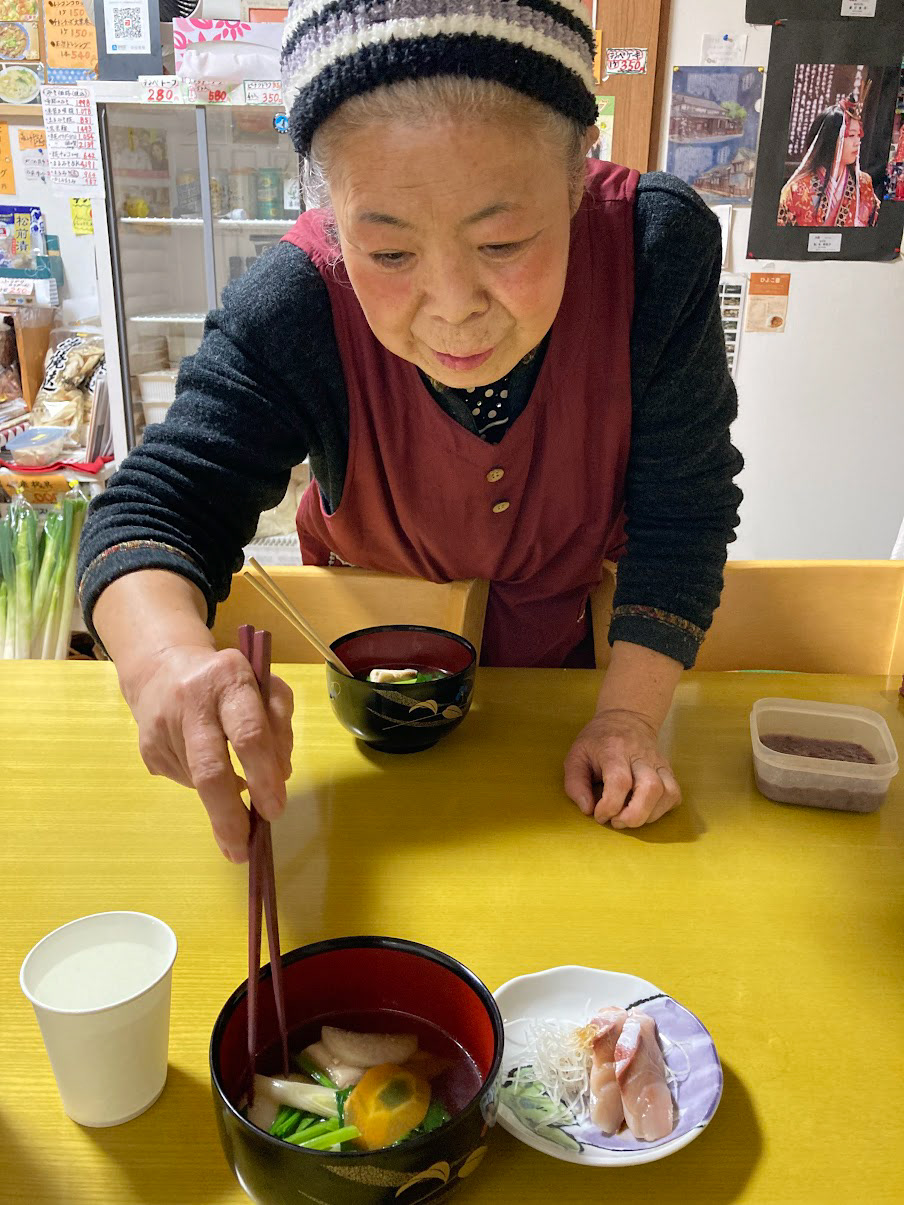
machan arranging her ozoni
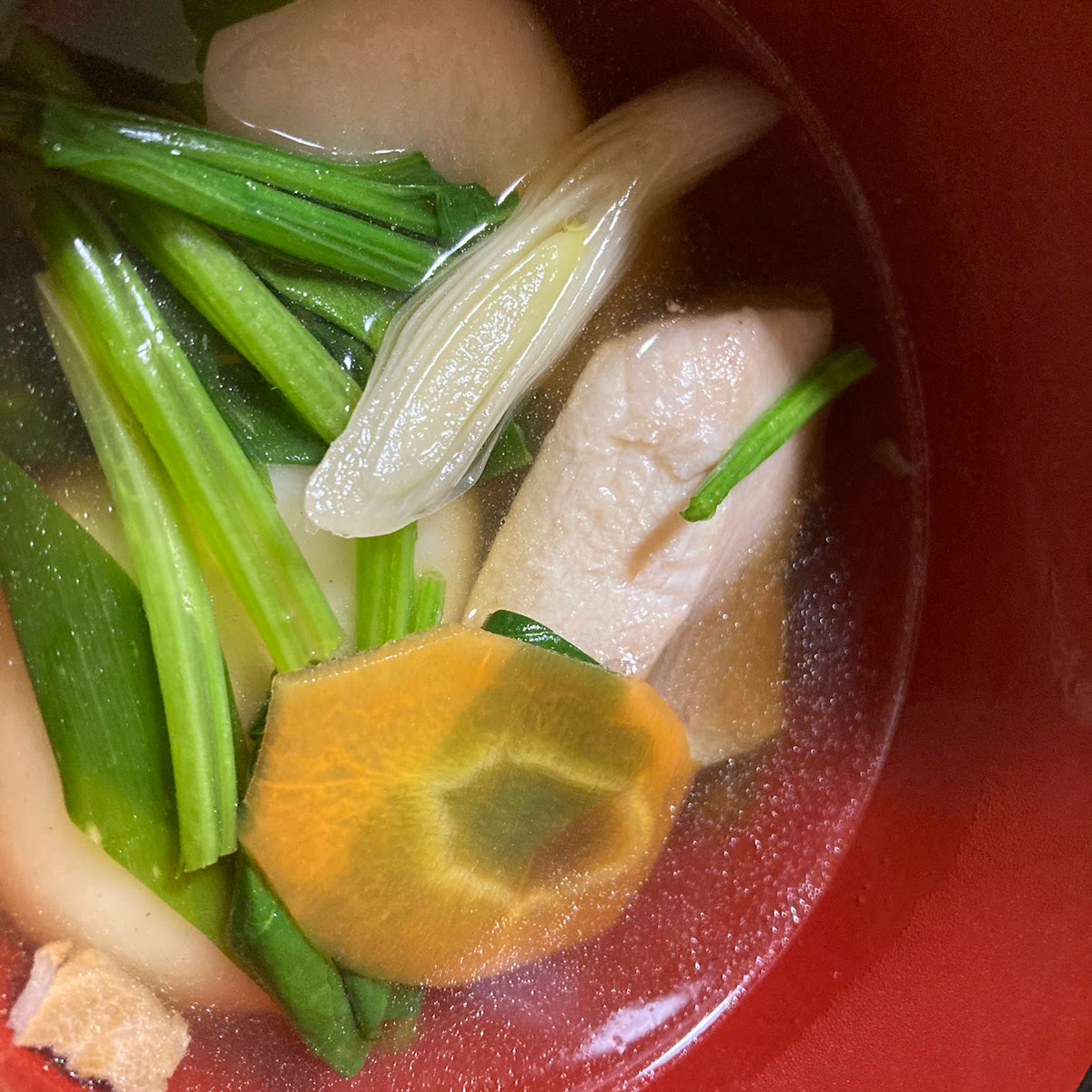
closeup buri ozoni shot!
my ozoni!





